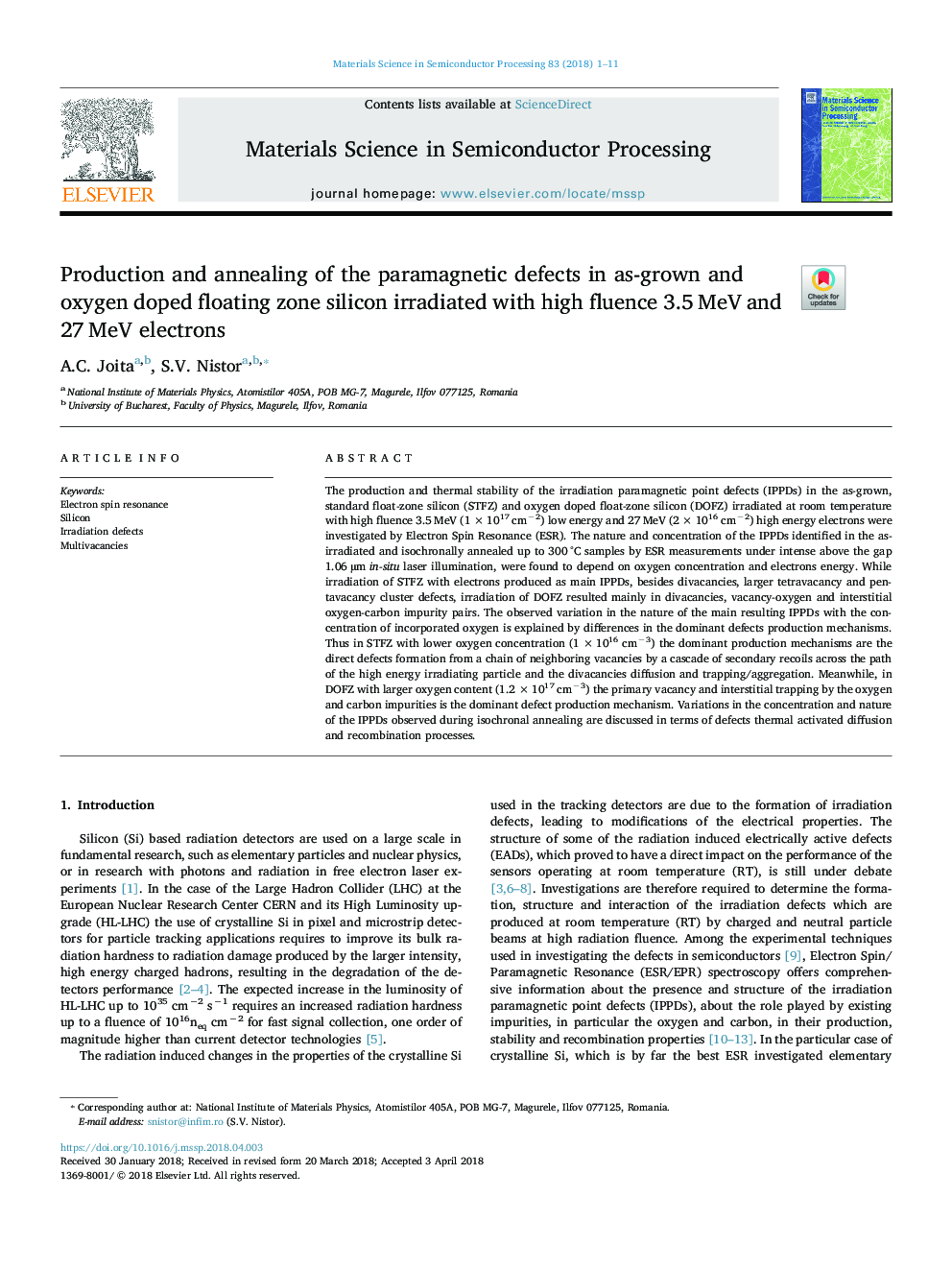| Article ID | Journal | Published Year | Pages | File Type |
|---|---|---|---|---|
| 7117559 | Materials Science in Semiconductor Processing | 2018 | 11 Pages |
Abstract
The production and thermal stability of the irradiation paramagnetic point defects (IPPDs) in the as-grown, standard float-zone silicon (STFZ) and oxygen doped float-zone silicon (DOFZ) irradiated at room temperature with high fluence 3.5â¯MeV (1â¯Ãâ¯1017 cmâ2) low energy and 27â¯MeV (2â¯Ãâ¯1016 cmâ2) high energy electrons were investigated by Electron Spin Resonance (ESR). The nature and concentration of the IPPDs identified in the as-irradiated and isochronally annealed up to 300â¯Â°C samples by ESR measurements under intense above the gap 1.06â¯Âµm in-situ laser illumination, were found to depend on oxygen concentration and electrons energy. While irradiation of STFZ with electrons produced as main IPPDs, besides divacancies, larger tetravacancy and pentavacancy cluster defects, irradiation of DOFZ resulted mainly in divacancies, vacancy-oxygen and interstitial oxygen-carbon impurity pairs. The observed variation in the nature of the main resulting IPPDs with the concentration of incorporated oxygen is explained by differences in the dominant defects production mechanisms. Thus in STFZ with lower oxygen concentration (1â¯Ãâ¯1016 cmâ3) the dominant production mechanisms are the direct defects formation from a chain of neighboring vacancies by a cascade of secondary recoils across the path of the high energy irradiating particle and the divacancies diffusion and trapping/aggregation. Meanwhile, in DOFZ with larger oxygen content (1.2â¯Ãâ¯1017 cmâ3) the primary vacancy and interstitial trapping by the oxygen and carbon impurities is the dominant defect production mechanism. Variations in the concentration and nature of the IPPDs observed during isochronal annealing are discussed in terms of defects thermal activated diffusion and recombination processes.
Related Topics
Physical Sciences and Engineering
Engineering
Electrical and Electronic Engineering
Authors
A.C. Joita, S.V. Nistor,
